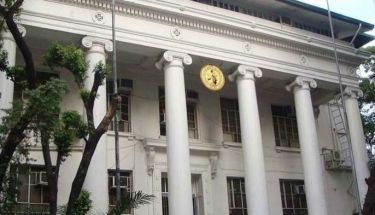Agri smuggling $10-B trade – study
(First of three parts)
MANILA, Philippines - In the 1980s, smuggling of agricultural commodities had evolved into a big-time illegal trade, with the value of such products estimated at $6 billion a year.
As the volume of imported agricultural commodities increased in the 1990s, the magnitude of technical smuggling in the sector correspondingly expanded.
By 2008, the value of smuggled agricultural items had ballooned to more than $10 billion annually.
These lucrative activities have persisted to this day, indicating that government efforts to curb the illegal entry of such products have been ineffective.
Internationally traded and smuggled into the country are milled rice, refined sugar, beef, onion, pork, chicken, ginger, carrots and turnips, according to a recent study titled “An Assessment of Smuggling of Selected Agricultural Commodities in the Philippines.â€
Funded by the Department of Agriculture-Bureau of Agricultural Research (DA-BAR), the study was carried out by the government-hosted Southeast Asian Regional Center for Graduate Study and Research in Agriculture (SEARCA) with the help of University of the Philippines Los Baños (UPLB) experts Prudenciano Gordoncillo (team leader), Cesar Quicoy, Julieta de los Reyes, and Arvin Vista.
The study investigated the quantitative and qualitative aspects of smuggling in the agriculture sector and assessed the effectiveness and weaknesses of existing trade policies.
It focused greater attention on agricultural goods being illegally traded both in the so-called front door (northeastern Luzon shores) and in the back door – Mindanao, Sulu, and Palawan (Minsupala).
DA-BAR and SEARCA said that while there had been previous efforts to look into smuggling in the country, the recent study was the first to bring together government agencies concerned and draw lessons from the experiences of regulatory government agencies, producers, and traders.
The project involved DA/BAR, SEARCA, UPLB, DA-Bureau of Plant Industry, DA-Bureau of Agricultural Statistics, Bureau of Customs, National Meat Inspection Service, National Veterinary Quarantine Services, and the private sector.
The study also compared the nature of smuggling and imported commodity flow in the country with that of the highly successful anti-smuggling systems in Singapore and Indonesia, which the research team visited.
In the conduct of the study, roundtable dialogues were held in major ports in Luzon, the Visayas, and Mindanao.
“The burden of smuggling falls on the local producers who cannot compete with cheaper prices of smuggled commodities,†the study said.
Agriculture Undersecretary Segfredo Serrano, who chaired the project’s steering committee, said, “The issue of smuggling is a lot more complex than a simple trade problem because sometimes it is a combination of a lot of factors that determine the extent, flow, intensity, and nature of the illegal practice.â€
The study, he added, is “a good start as it makes it possible to talk about smuggling with evidence rather than anecdotal stories.â€
“We hope that the study’s findings and recommendations will serve as a useful guide for instituting policy reforms toward more stringent regulations and remedial options to address this important problem,†SEARCA director Gil Saguiguit Jr. said.
Factored in the study were data on the domestic agricultural production and consumption from 1986 to 2009 gathered from DA-BAS.
The research team noted that the common forms of technical smuggling include misdeclaration, undervaluation, misclassification, and falsified documentation.
“These were commonly seen with the more perishable commodities, such as fresh meat and vegetables, because they have to be shipped in refrigerated vans,†the study pointed out.
“For rice and sugar, however, in some cases, direct smuggling is done because the products are not as perishable and can be transported in bulk,†the study stated.
It noted that the estimated values of technical smuggling considerably increased after 1995.
This pattern is reflected in all the eight commodities studied. Not only did the volume of technical smuggling increase considerably, in most of the products it was increasing at a faster rate, too.
In terms of volume, the top five commodities smuggled from 1986 to 2009 were milled rice, refined sugar, beef, dry onion and pork, in that order. In terms of value, the top five items illegally traded were milled rice, beef, refined sugar, pork and chicken meat. Ginger, carrots and turnips were the least smuggled.
The estimated value of milled rice smuggled into the country during the period under review totaled $1.96 billion; followed by refined sugar, $448.2 million; beef, $428.8 million; onion, $259.55 million; and pork, $117.45 million.
“The more alarming consequence of smuggling is the threat to domestic industries in terms of risks of exposure to pests and diseases as well as endangering the safety of consumers,†the study warned.
(To be continued)
- Latest
- Trending





























